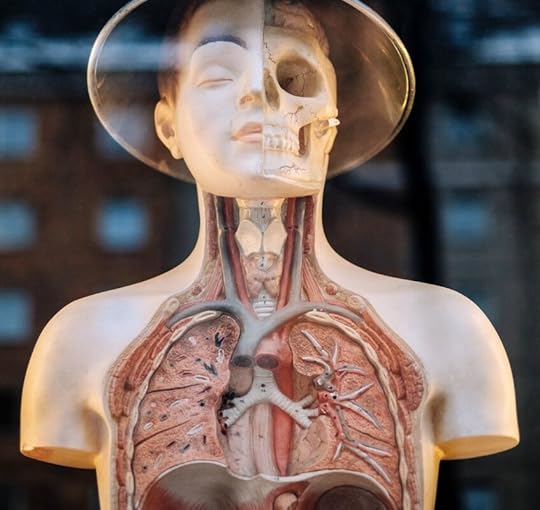Get Inside Your Character’s Body
 Photo by Samuel Zeller on Unsplash
Photo by Samuel Zeller on UnsplashBody Details to Improve Your Story Most writers don’t think of anatomy and physiology when they are creating a story, but you can enhance reader engagement with body part details. If you find your characters all nodding in agreement or sighing in resignation, try expanding your view of the character.
Every emotion sets off physical responses in the body. You can use the details of these responses to enrich your story.
The next time a character has a response, think of their whole body from head to toe. What are their hands doing? How are they breathing? What is their body position? Use one of those responses in your story.
Many writers act out a scene to get a better feel for how characters feel. You may feel self-conscious the first time you try, but putting yourself in your characters’ roles and physically acting out a scene gives you details you wouldn’t think of typing on your computer. Your Head-to-Toe Checklist Think about every part of your character’s body to create detailed reactions. You be on your way to creating vibrant and complex characters. You’ll make your characters knowable to the reader and the details create empathy. They’ll know when your sleuth has a worthy opponent and when a suspect is lying. And, they’ll know your sleuth’s reactions to those characters.
Each time you need to create action between characters give each character a body review. Here’s a list to help you go from top to bottom.
Head Hair Scalp Brain Forehead TemplesEyebrows Eyelids EyesNose Cheeks EarsLips Mouth Tongue Teeth Jaw Chin Face Neck Throat Voice Shoulders Torso Chest Heart Lungs Stomach Back Bottom Arms Hands Fingers Legs Feet Toes Skin Veins Muscles Bones List source; Valerie Howard books.
The reactions you use for each character depends on the point of view (POV) in the scene. Your sleuth can’t know what’s going on internally - brain, stomach - but she can use her powers of observation to note other physical reactions.
Breathe Life Into Your Characters Readers identify with physical reactions. They understand because they experience these reactions themselves. Tie the physical reactions to emotions bring characters alive.
Seasoned writers use this technique as they write. Beginning writers may focus on these bodily reactions during editing. In the speed of just getting it written you may write He nodded. During editing you have time to expand the physical reactions.
Two handbooks can help you work with these details:
The Emotion Thesaurus: A Writer’s Guide To Character Expression by Angela Ackerman and Becca Publisi
. 1,000 Character Reactions from Head to Toe by Valerie Howard.
Both books are available in both digital and print format. They are both great reference guides when writing character reactions. Add them to your library.
Realistic detail brings your characters alive for your readers. Use one or two examples for each reaction (don’t overload your reader) to keep them engaged, sympathetic, and turning pages.
Zara Altair
Published on June 13, 2019 20:46
No comments have been added yet.



